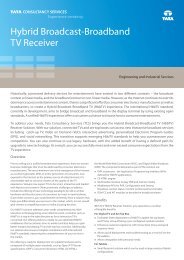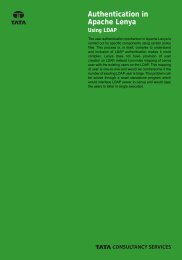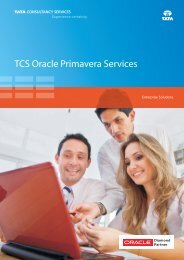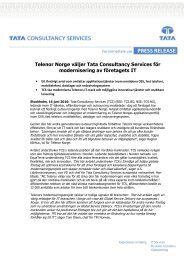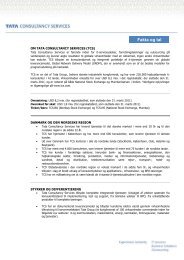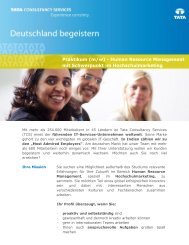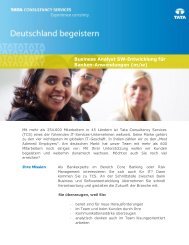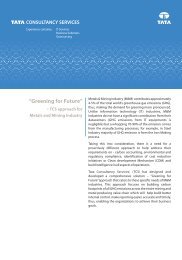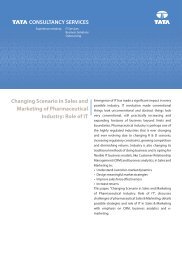TCS Corporate Sustainability Report 2010-11 - Tata Consultancy ...
TCS Corporate Sustainability Report 2010-11 - Tata Consultancy ...
TCS Corporate Sustainability Report 2010-11 - Tata Consultancy ...
Create successful ePaper yourself
Turn your PDF publications into a flip-book with our unique Google optimized e-Paper software.
Aspect How<br />
Succession planning<br />
project level.<br />
Remuneration Policy<br />
Business sustainability requires consistency in management vision and minimization of<br />
impact when there is a leadership change. Therefore, succession planning is an important<br />
element in ensuring smooth transitions. At <strong>TCS</strong>, succession planning occurs at every level<br />
– at the corporate level, at the business unit level, at the account level and even at the<br />
At the highest level, succession planning of senior management is directly reviewed by the Executive Committee of<br />
the Board. Business/Unit Heads are invited to Board Meetings from time to time to give presentations to the Board to<br />
update them. This provides an opportunity for the Board to interact with Senior Executives periodically and assess<br />
values, competencies and capabilities to help them identify suitable internal successors and provide feedback.<br />
In these last four decades, <strong>TCS</strong> has gone through two CEO-level transitions, the last one in October 2009. The seamless<br />
manner in which that transition took place is evidence that the Company’s succession planning is working well.<br />
The Company follows a compensation mix of fixed pay, benefits and Economic Value<br />
Added Analysis based variable pay. Individual performance pay is determined by business<br />
performance and the performance of the individuals measured through the annual<br />
appraisal process.<br />
Compensation for Non-Executive Directors on the Board consists of:<br />
n Sitting Fees for attending Board meetings and meetings of Committees of the Board, to the tune of Rs 10,000 per<br />
meeting.<br />
n Commission, as decided by the Board of Directors and approved by Members at the Annual General Meeting,<br />
within the ceiling of 1% of the net profits of the Company as computed under the Companies Act, 1956. The<br />
commission is distributed amongst the Non-Executive Directors based on their attendance and contribution at the<br />
Board and certain Committee meetings, as well as the time spent on operational matters other than at meetings.<br />
n Reimbursement of any out-of-pocket expenses incurred by the Directors for attending meetings.<br />
Remuneration of the Managing Director and Executive Directors consists of a fixed component (salary, benefits,<br />
perquisites and allowances) and a performance-liked variable component (commission).<br />
The Remuneration Committee decides the annual increments within the salary scale approved by the Members, and<br />
the commission payable to the Managing Director and the Executive Directors out of the profits for the financial year<br />
and within the ceilings prescribed under law. The commission amount is based on the company’s performance as well<br />
as that of the Managing Director and each Executive Director, measured along several sustainability-linked criteria<br />
discussed in this report.<br />
Details of the compensation paid out to Members of the Board in <strong>2010</strong>-<strong>11</strong> are disclosed on Page 64 of our Annual<br />
<strong>Report</strong>.<br />
24



